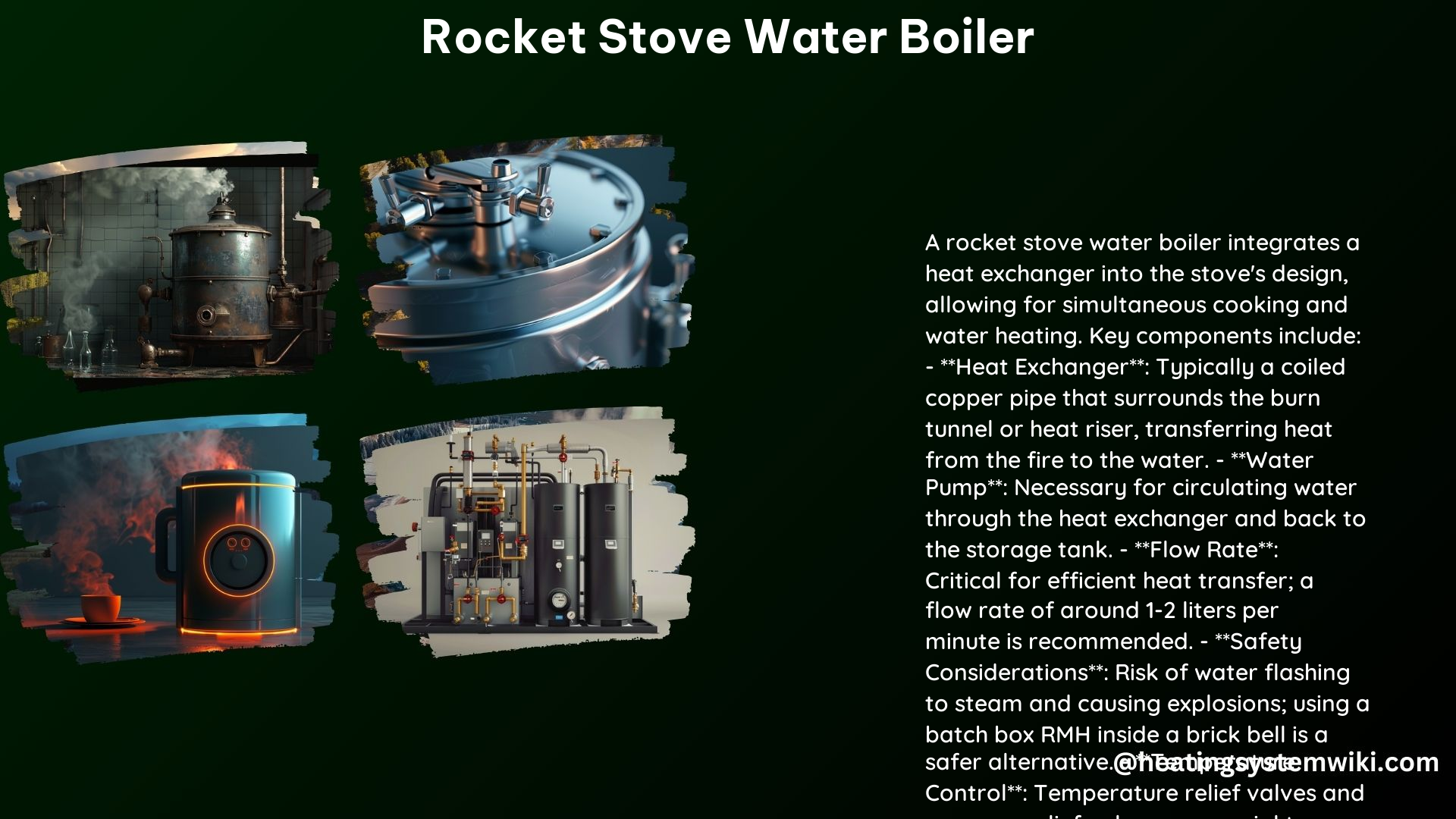A rocket stove water boiler is a highly efficient and versatile heating system that can be designed to heat a large tank of water, such as 500 gallons, effectively and safely. This comprehensive guide delves into the key design considerations, technical specifications, and example designs to help you understand the intricacies of building a reliable and high-performing rocket stove water boiler.
Design Considerations
Thermosiphon Effect
The thermosiphon effect is a crucial principle in rocket stove water boilers. This natural convection process allows the heated water to rise and be replaced by cooler water, creating a continuous circulation of water through the system without the need for pumps. To achieve this effect, the heat exchanger must be positioned at a lower height than the water tank, and the system must be properly insulated to maintain the temperature gradient.
Insulation and Height Requirements
Proper insulation is essential to maintain the temperature of the water and ensure efficient heat transfer. The height of the system should be designed to allow for the thermosiphon effect to work effectively. Typically, the heat exchanger should be at least 1-2 meters below the water tank to create the necessary height differential and promote the natural circulation of water.
Heat Exchanger Design
The heat exchanger is the heart of the rocket stove water boiler, responsible for transferring the heat from the hot gases generated by the rocket stove to the water. The design of the heat exchanger should aim to maximize heat transfer efficiency. This can be achieved using a coiled copper pipe or a series of tubes that allow for direct contact between the hot gases and the water, ensuring optimal heat exchange.
Safety Features
Safety is of paramount importance when designing a rocket stove water boiler. Incorporating safety features such as pressure relief valves and temperature sensors is crucial to prevent overheating and ensure safe operation. These features should be carefully integrated into the overall system design to provide reliable protection against potential hazards.
Technical Specifications

Materials
The rocket stove and heat exchanger can be constructed using a variety of materials, including steel, copper, or stainless steel. The choice of material will depend on factors such as durability, corrosion resistance, and heat transfer efficiency. For example, copper is an excellent conductor of heat, making it a popular choice for the heat exchanger, while stainless steel offers superior corrosion resistance.
Dimensions
The dimensions of the rocket stove and heat exchanger will depend on the size of the water tank and the desired heating capacity. For a 500-gallon water tank, a larger heat exchanger will be required to ensure sufficient heat transfer and maintain the desired heating rate.
Fuel Efficiency
One of the key advantages of rocket stoves is their exceptional fuel efficiency. The design of the rocket stove water boiler should aim to maximize fuel efficiency while maintaining the desired heating capacity. This can be achieved through careful optimization of the combustion chamber, air intake, and overall system design.
Water Flow Rate
The water flow rate through the system will depend on the desired heating rate and the size of the water tank. A higher flow rate will be required to achieve faster heating, but this must be balanced with the system’s heat transfer capabilities. Proper design and sizing of the heat exchanger and water circulation components are crucial to ensure the desired water flow rate and heating performance.
Example Designs and Performance
Copper Coil Heat Exchanger
A rocket stove with a copper coil heat exchanger can heat 80 liters of water from 30°C to 70°C in 1.2 hours. The copper coil design provides efficient heat transfer, leveraging the high thermal conductivity of copper to rapidly heat the water.
Batch Box RMH
A batch box rocket mass heater (RMH) inside a brick bell can safely heat a tank of water. This design allows for the water tank to be integrated directly into the RMH system, with the heated water then pumped into other tanks as needed. This approach has been proven to be a reliable and safe system for water heating.
Insulated Rocket Stove
An insulated rocket stove hot water system can heat a respectable quantity of hot water with minimal fuss, fuel, and footprint. The insulation helps to retain the heat generated by the rocket stove, improving the overall efficiency and reducing the fuel consumption required to maintain the desired water temperature.
References
- Rocket Stove Water Heater Design
- Rocket Stove Water Heater Performance
- Insulated Rocket Stove Water Heater
- Rocket Stove Boiler Discussion
- Rocket Stove Water Heater Long-Term Review
By understanding the design considerations, technical specifications, and example designs, you can now confidently approach the construction of a highly efficient and safe rocket stove water boiler that can effectively heat a large tank of water, such as 500 gallons, for your home or off-grid living needs.
